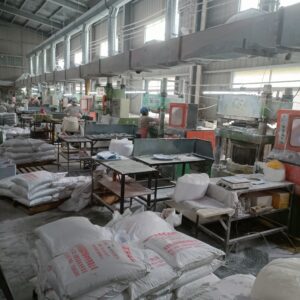
The Production Process Of Melamine Tableware
Introduction to Producing Melamine Tableware
Producing melamine tableware involves a series of intricate processes that require precision and attention to detail. From the initial raw material such as melamine moulding compound,Urea moulding compound, selection to the final product packaging, every step plays a crucial role in ensuring the quality and safety of the tableware. In this comprehensive guide, we will delve into the various stages involved in producing melamine tableware, highlighting the key considerations and best practices at each phase.
Raw Material Selection and Preparation
The first step in producing melamine tableware is the careful selection of raw materials. Melamine molding powder, which is the primary component, is derived from combining melamine, formaldehyde, and other chemicals. It is essential to source high-quality melamine and other raw materials to ensure the durability and safety of the final tableware products. Additionally, the raw materials need to undergo meticulous preparation, including accurate measurements and blending, to achieve the desired chemical composition for the melamine resin.
Molding and Shaping
Once the melamine resin is prepared, the next phase involves molding and shaping the tableware products. This process typically utilizes compression molding techniques, where the resin is subjected to high pressure and heat within custom-designed molds. The molds are precision-engineered to create the specific shapes and designs of the tableware, ranging from plates and bowls to cups and saucers. The molding process requires expertise to ensure uniformity and consistency across the entire product range.After the initial molding, the tableware undergoes additional processes such as trimming and finishing to achieve smooth edges and flawless surfaces. Any imperfections or irregularities are meticulously addressed during this stage to meet the highest quality standards.
Surface Design and Decoration
The aesthetic appeal of melamine tableware is often enhanced through surface design and decoration. This can involve various techniques such as decal transfer printing, in-mold labeling, or direct printing to apply intricate patterns, vibrant colors, or custom branding onto the tableware products. The choice of decoration method depends on the specific design requirements and the desired visual impact. It is crucial to use food-safe and durable decorating materials that can withstand repeated use and washing without fading or deteriorating.
Quality Control and Testing
Throughout the production process, stringent quality control measures are implemented to ensure that the melamine tableware meets regulatory standards and consumer safety requirements. This includes conducting comprehensive testing for factors such as impact resistance, heat tolerance, and chemical migration. Additionally, the tableware products are evaluated for dimensional accuracy, surface finish, and overall structural integrity. Any products that do not meet the specified criteria are identified and rectified to maintain the highest level of quality assurance.
Final Packaging and Distribution
Once the melamine tableware has passed all quality checks and inspections, it is ready for final packaging and distribution. The packaging phase involves careful handling to prevent any damage to the finished products. Special attention is given to packaging design to ensure that the tableware is securely protected during transportation and storage. Furthermore, clear labeling and product information are included to provide consumers with essential details about the tableware, including usage instructions and care guidelines.The distribution of melamine tableware involves strategic logistics planning to reach global markets efficiently. Whether it is through direct distribution to retailers or international shipping to various destinations, the logistics process is optimized to maintain product quality and integrity throughout the supply chain.
Conclusion
Producing high-quality melamine tableware requires a combination of technical expertise, adherence to strict quality standards, and a commitment to consumer safety. Each stage of the production process, from raw material selection to final packaging, plays a pivotal role in delivering durable, visually appealing, and safe tableware products to consumers worldwide. By following best practices and leveraging advanced manufacturing techniques, manufacturers can continue to innovate and meet the evolving demands of the tableware industry.





No Comments